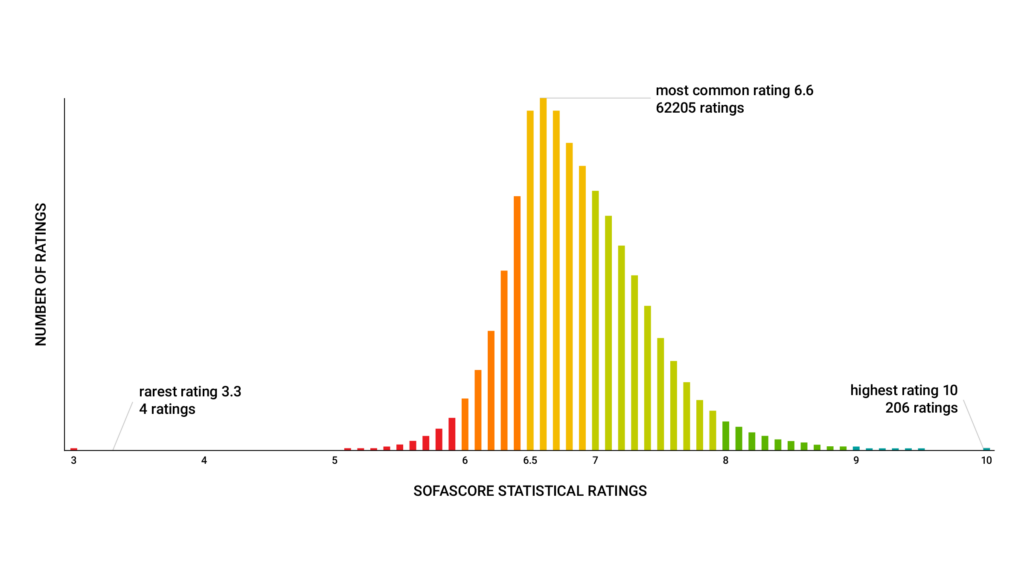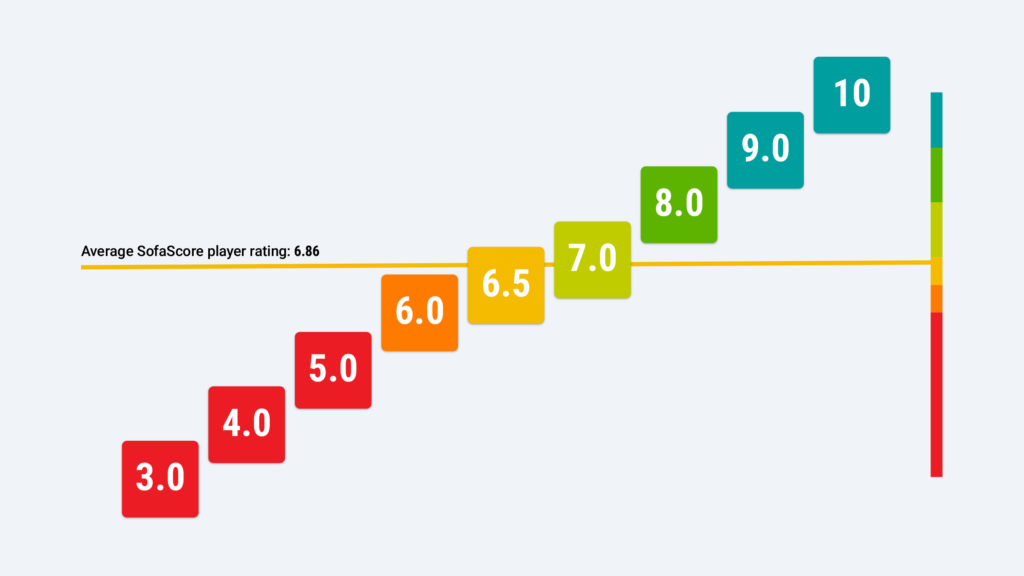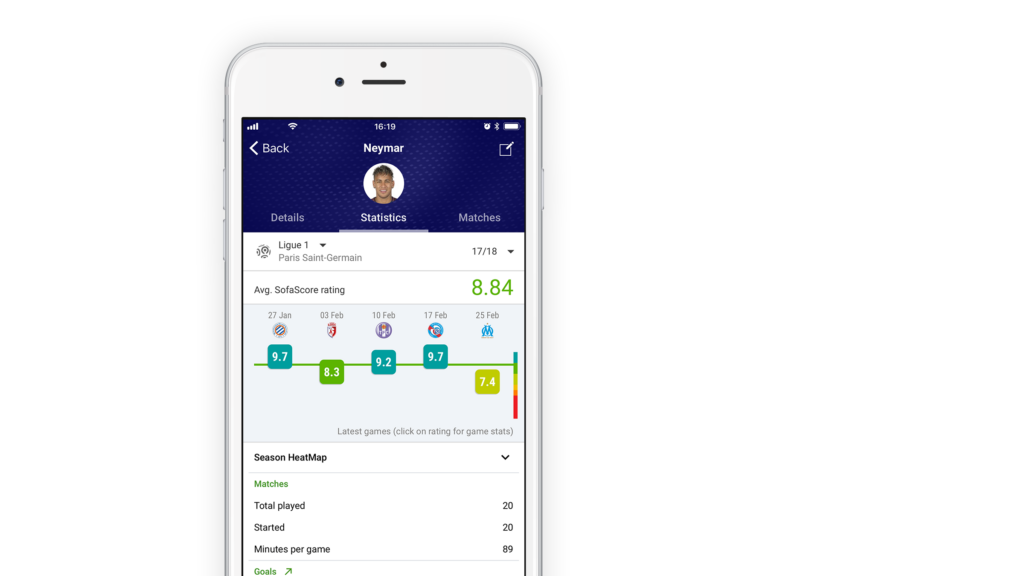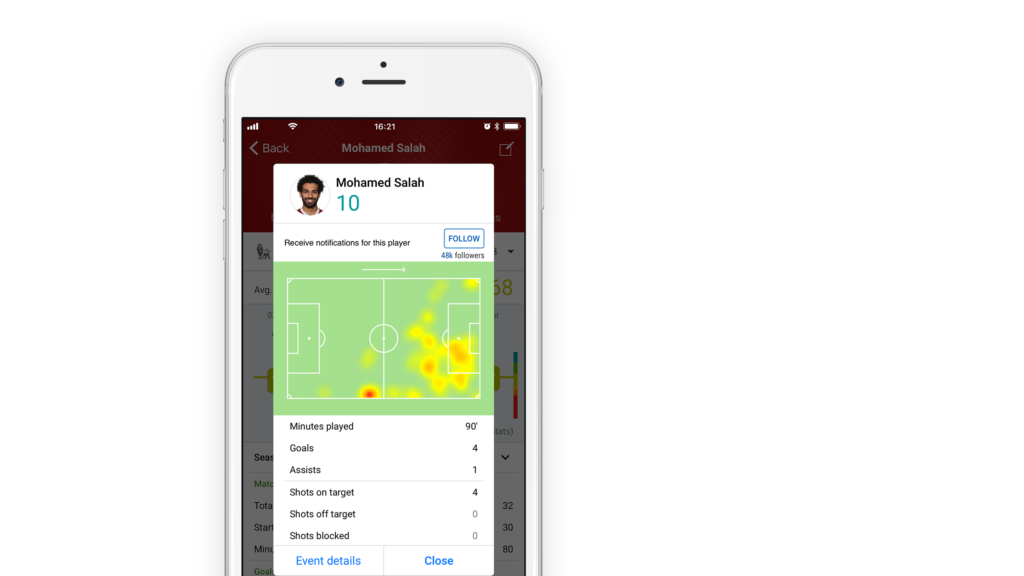There has been a revolution in football – and Sofascore has played its part. Sofascore statistical ratings are the answer to the growing need to quantify player performances.
What an average football fan sees during a TV broadcast in terms of statistics is just a fraction of the data collected during a match. There are around 1,500 different events in every fixture that can translate into numbers what happened on a football pitch. Human operators manually record data, to gather information on things such as possession, passes, duels, tackles, runs, interceptions, shots and others. Our idea was to derive a useful information from these stats that would in a self-explanatory way summarize player’s performance.
Our team of data analysts was hard at work for a year, analyzing hundreds of games, identifying key performance indicators and giving value to each one. We approached football as a complex dynamic system in which everyone has a specific role. The final results is a sophisticated algorithm that generates player ratings on a scale to 10, depending on what the players did during their time on the pitch.

Sofascore statistical ratings are live, meaning they update in real-time as the action unfolds. When the match starts, it takes up to 10 minutes for the players to generate enough stats for their rating to be shown. The ratings are color coded so that users can understand the impact of a player at a glance.

Generally, players rarely receive ratings below 6, and such rating is usually an indicator of a major error like an own goal, penalty conceded, red card or simply a sum of errors. In contrast, players also rarely receive a perfect 10 rating as such requires an extraordinary effort with minimum errors.

In essence, football is a game that values goals, and if you take a part in a goal, your contribution will be valued more toward final Sofascore rating. However, there is more to football than goals, and we have taken this complexity into account when creating an algorithm in order to give each player an equal opportunity for a great rating. So, if a player makes a lot of tackles, key passes, dribbles, interceptions and is generally all over the pitch, he can, in theory, receive a higher rating than a player who scored two goals, but was otherwise not involved in the match and had just a few touches. This is straightforward sports science which leaves no room for bias as it comes down to a machine crunching dozens of statistics to produce the rating.

Football has become a data-driven product and Sofascore statistical ratings are fast becoming an industry standard for player performance evaluation. Do you have a question about Sofascore statistical ratings? Write us on support@sofascore.com.